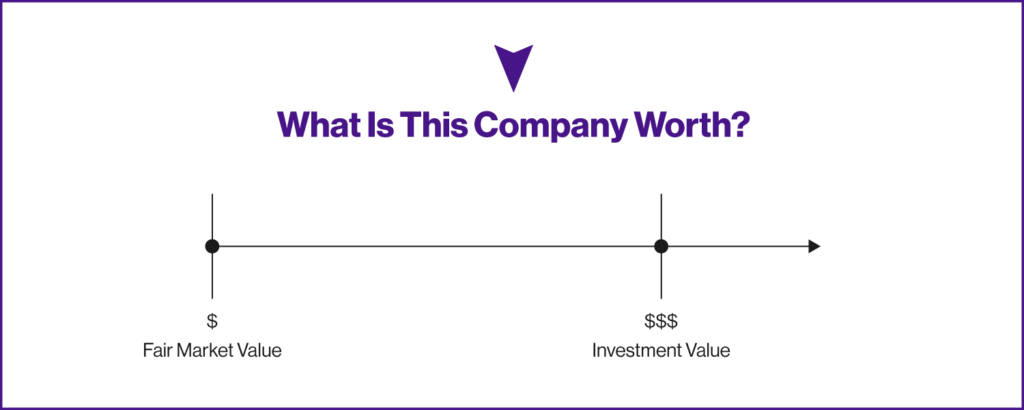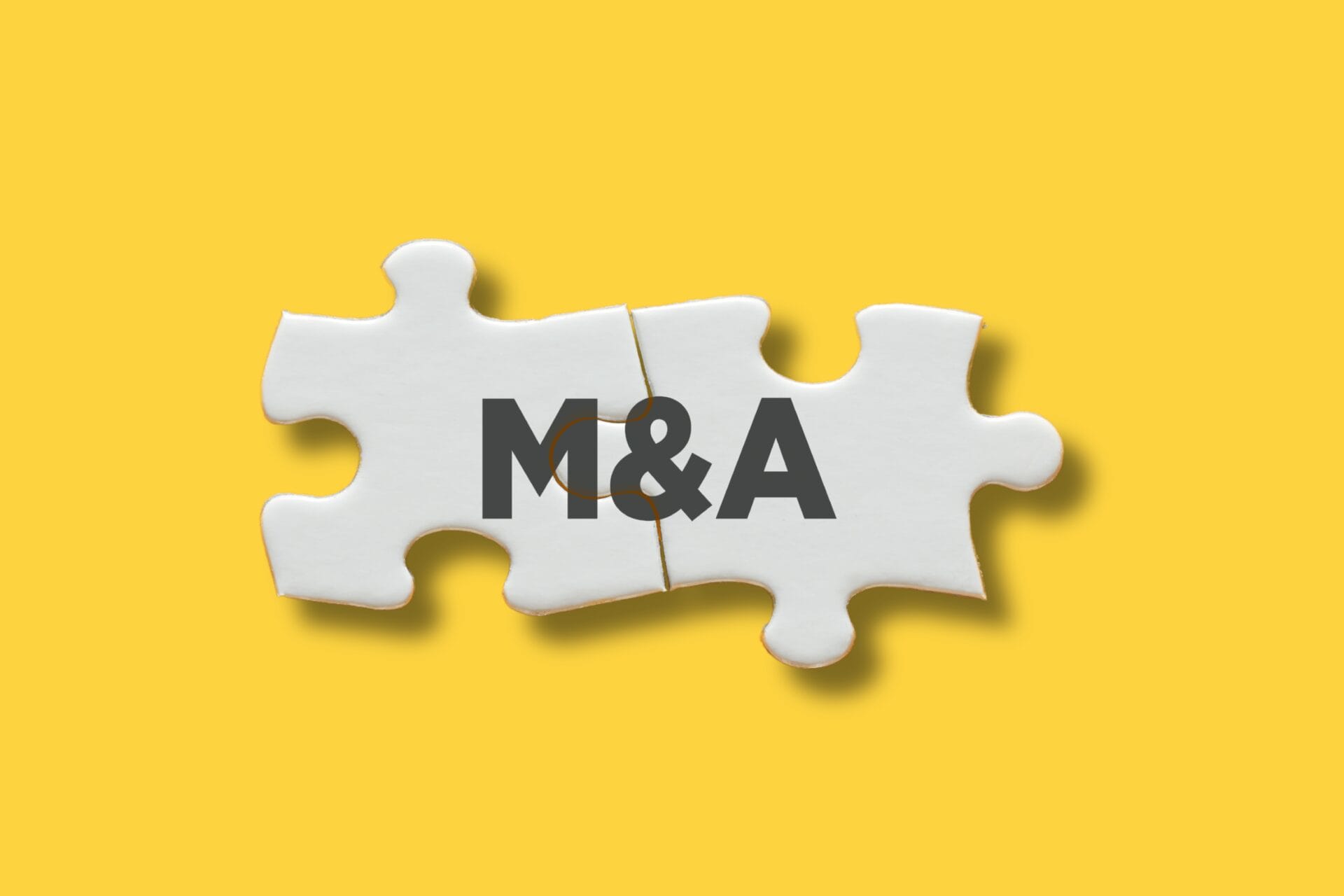Mergers and acquisitions, such as when two massive conglomerates combine, sometimes make headlines. However, businesses of all sizes go through the merger and acquisition process every day.
If you’re a business owner planning to buy, merge, or sell, it’s essential to have a merger and acquisition strategy in place. We’ll help you get started by answering common questions about M&A and showing you examples of strategies that leave all parties satisfied.
Table of Contents
What’s the Difference Between a Merger and an Acquisition?
Broadly, M&A refers to transactions between two companies seeking to combine.
These terms are often used interchangeably, but there are subtle differences between the two concepts.
- When companies merge, their operations, assets, and liabilities are combined into a new entity with shared ownership.
- During an acquisition, one company purchases another, resulting in either its dissolution or becoming a subsidiary of the purchaser.

Why Merge With or Acquire a Company in the First Place?
M&A is an expensive and risky process. While no two transactions are identical, companies that accept these burdens nearly always pursue horizontal or vertical integration.
Horizontal Integration
Horizontal integration combines companies with similar products to achieve economies of scale, enter new markets, and diversify product offerings.
For example:
- Cisco diversified its product offerings by acquiring Duo Security in 2018. Afterward, they could offer Duo’s service to their client base and their suite of services to Duo’s book of business.
- Disney acquired Wideload Games in 2003. In doing so, they entered the video game market.
Vertical Integration
Vertical integration involves purchasing a company either upstream or downstream in the supply chain. Doing so can reduce production costs, capture new profit streams, and access new distribution channels.
For example:
- Since transitioning from a DVD distributor to a streaming platform, Netflix has acquired a handful of production studios and evolved their company from an end-of-supply chain distribution channel to a producer and distributor of popular media.
- In 2010, Apple acquired Intrinsity, a semiconductor producer. Instead of relying on third-party suppliers for iPhone components, Apple now produces them within its internal ecosystem.
Merger and Acquisition Process
The M&A process can seem unwieldy, especially if this is your first time pursuing such an endeavor. While outside assistance from lawyers, accountants, and consultants will almost certainly be necessary, it’s important to first understand the steps of an acquisition from end to end.
Intentional Goal Setting
Often, companies enter the M&A process opportunistically. Businesses can go on the market for various reasons: the founder retires, passes away unexpectedly, or has an unresolvable dispute with a cofounder and decides to sell.
Regardless of why a business suddenly becomes for sale, retired investment banker Paul Giannamore advises against impulsively pursuing an M&A. Over a career involving thousands of transactions, he observed that companies that merge or acquire others opportunistically don’t perform well.
Instead, it’s best to begin from a place of intentionality. Begin by considering some of the following questions:
- Do you want to merge with or acquire another company?
- Based on your available capital, how large of a company can you acquire?
- Are you buying a book of business, or do you want a standalone company that will continue servicing its customer base?
- What is the minimum profit margin for a company you’d like to merge with or acquire?
- Are you looking to diversify your service line? Enter a new market? Eliminate competition?
- If the company has redundant employees, how do you plan to transition (or eliminate them) after an M&A?
- Does the company need to be geographically close to yours? Within the same time zone?

Search for Companies That Fit Your Criteria
Once you’ve identified what you’re looking for, it’s time to begin the search for a suitable company. Be patient during this stage; it’s better to find a good fit than rush into a deal. It can be difficult to know exactly how to look for an M&A opportunity, so here are some places to begin:
- Collaborate with professional intermediaries. These can be investment bankers or brokers specializing in M&A or financial advisors who can monitor opportunities among their client base.
- Attend industry networking events. Connecting with stakeholders and making them aware of your goals can lead to valuable insider information and referral opportunities.
- Online platforms like MergerMarket or Pitchbook are good places to search.
Make Contact With One or More Companies
Once you’ve found at least one potential opportunity, you need to vet it thoroughly before making any sort of official offer. Successful deals hinge on strong communication from all parties.
Conduct Valuation Analysis
If initial contact goes well, it’s time to investigate the details of your target company. During this stage, you should evaluate the company’s fair market rate and potential value after being integrated with yours.
Here are things to consider and questions to ask:
- To begin, you should collect ideally five years of financial statements, including tax returns and internal documents; two years should be mandatory.
- Use financial models to analyze historical performance as well as projected growth rates.
- Find out who the key employees are and what roles they hold.
- Will this M&A result in redundancies, such as office space or software subscriptions, between your two companies (and therefore cost-cutting opportunities)?
- Examine their customer base with a particular eye toward length of relationship and diversity—sporadic revenues due to short-lived client relationships or overreliance on a small number of customers are significant risks.
- Are there cross-sale opportunities between your customer bases?
Negotiate, Purchase, and Finance the Transaction
We’ll cover strategic approaches for these topics in the following section. But for now, know that these are the final steps of the M&A process.
Merger and Acquisition Strategies
As with any business transaction, the goal is to maximize your party’s value while creating a win-win for both sides. Let’s look at some strategic negotiating, valuation, and financing approaches buyers and sellers can use during an M&A to maximize their side’s value.
Valuation Strategy

Determining the “value” of a company isn’t easy. There are so many variables to consider that it’s nearly impossible to arrive at an objective measure.
- Earnings: Sometimes, it’s best to use an earnings multiple, but choosing the correct version of EBITDA is difficult. Depending on the industry and chosen measure of “earnings,” M&A deals are closed for anywhere from 1x to 20x earnings.
- Comparable companies: Treating the transaction like a real estate deal can also be appropriate. Look for comparable companies and use those deals as starting points, but remember that no two companies are exactly alike. Anything from geographic region and market conditions to pending lawsuits can change a company’s value.
While there is no single best valuation technique to bring to a negotiation, there are two crucial goalposts to remember. These represent the theoretical minimum and maximum value of a company.
- Fair market value: What is this company worth in the present?
- Investment value: How much more valuable will this company be after combining it with yours?
A seller aims to maximize the sale price by negotiating based on investment value. Conversely, the buyer aims to minimize the price by basing their offer on fair market value.
Negotiation Techniques
Regardless of whether you’re aiming for fair market or investment value, it’s important to make the first offer. This allows you to anchor the negotiation as close to your target as possible.
Another approach, popularized by “Getting to Yes” authors Roger Fisher and William Ury, is to negotiate based on what the other party values most. It’s easy to assume the most important factor is the final sale price, but this isn’t always true.
Perhaps the founder of a company is near retirement age and values time more than maximizing the sale price. In exchange for a rapid transaction, it may be possible to negotiate for a lower price. Or maybe a buyer values a particular department of your company especially highly. Center your negotiations around this department and its assets rather than other factors the buyer would value less.
Financing Strategy
Just like cars and homes, M&A transactions are usually debt-financed. The balance between cash down and financing arrangements can change a deal’s sticker price.
The more upfront cash a buyer provides, the lower the overall price should be. On the other hand, if the deal is structured to pay out over time, the seller should be compensated for their patience.
Conclusion
Whether value is added through horizontal or vertical integration, mergers and acquisitions are great ways for companies to improve profitability. Remember to be intentional rather than opportunistic if you decide to pursue an M&A and employ strategic thinking in your negotiating strategy.




